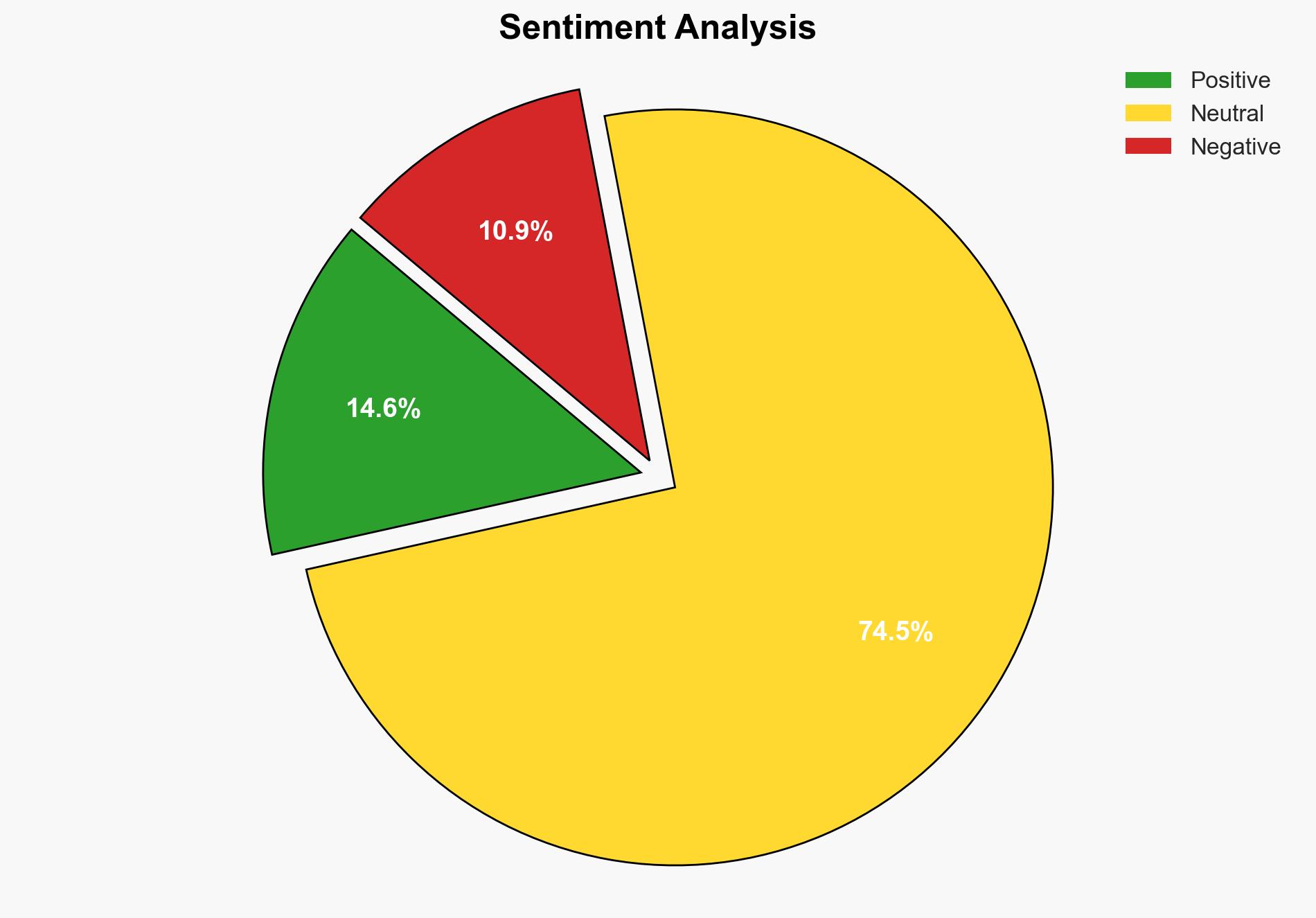Minister Budrys Arctic security is directly linked to the Baltic region – Globalsecurity.org
Published on: 2025-11-19
AI-powered OSINT brief from verified open sources. Automated NLP signal extraction with human verification. See our Methodology and Why WorldWideWatchers.
Intelligence Report:
1. BLUF (Bottom Line Up Front)
With a moderate confidence level, the most supported hypothesis is that Russia’s militarization of the Arctic is a strategic maneuver to exert control over critical maritime routes and influence NATO’s northern flank, impacting Baltic security. Recommended actions include enhancing NATO’s Arctic capabilities and fostering Nordic-Baltic cooperation to counter hybrid threats.
2. Competing Hypotheses
Hypothesis 1: Russia’s increased military presence in the Arctic is primarily aimed at securing economic interests and ensuring the Northern Sea Route remains viable amidst international sanctions.
Hypothesis 2: Russia’s Arctic militarization is a strategic effort to challenge NATO’s northern defenses and exert pressure on Baltic states, leveraging hybrid threats to destabilize the region.
The second hypothesis is more likely given the emphasis on military buildup and hybrid threat tactics, which align with Russia’s broader geopolitical strategy to counter NATO influence.
3. Key Assumptions and Red Flags
Assumptions include the belief that Russia’s actions are primarily defensive and economically motivated. A red flag is the potential underestimation of Russia’s willingness to escalate tensions. Deception indicators include public statements emphasizing economic cooperation while simultaneously increasing military capabilities.
4. Implications and Strategic Risks
The militarization of the Arctic could lead to increased geopolitical tensions, with potential spillover into the Baltic region. Cyber and hybrid threats may escalate, targeting critical infrastructure and communication lines. Economic sanctions and countermeasures could further strain international relations, impacting global trade routes.
5. Recommendations and Outlook
- Enhance NATO’s Arctic capabilities through joint exercises and infrastructure investments.
- Strengthen Nordic-Baltic cooperation on cyber defense and hybrid threat mitigation.
- Monitor China’s involvement in the Arctic to assess potential shifts in regional alliances.
- Best-case scenario: Increased cooperation leads to de-escalation and stability in the Arctic and Baltic regions.
- Worst-case scenario: Escalation of military tensions results in conflicts impacting global security and trade.
- Most-likely scenario: Continued strategic posturing by Russia, with intermittent hybrid threats challenging NATO’s response capabilities.
6. Key Individuals and Entities
Kästutis Budrys (Minister of Foreign Affairs, Lithuania), Russia, NATO, China.
7. Thematic Tags
Regional Focus, Regional Focus: Arctic, Baltic, NATO, Russia, Hybrid Threats
Structured Analytic Techniques Applied
- Causal Layered Analysis (CLA): Analyze events across surface happenings, systems, worldviews, and myths.
- Cross-Impact Simulation: Model ripple effects across neighboring states, conflicts, or economic dependencies.
- Scenario Generation: Explore divergent futures under varying assumptions to identify plausible paths.
Explore more:
Regional Focus Briefs ·
Daily Summary ·
Support us





